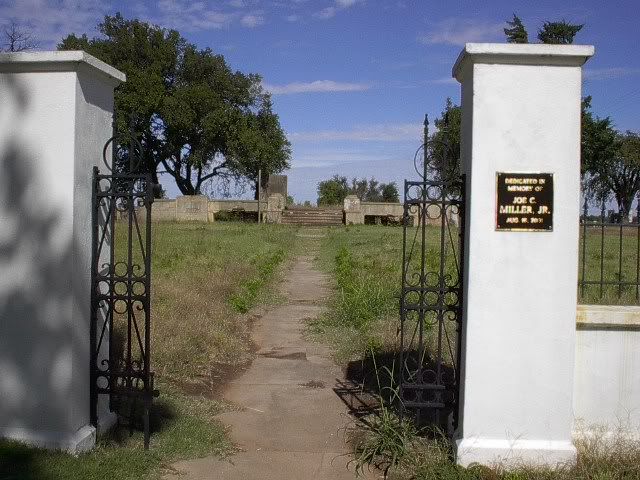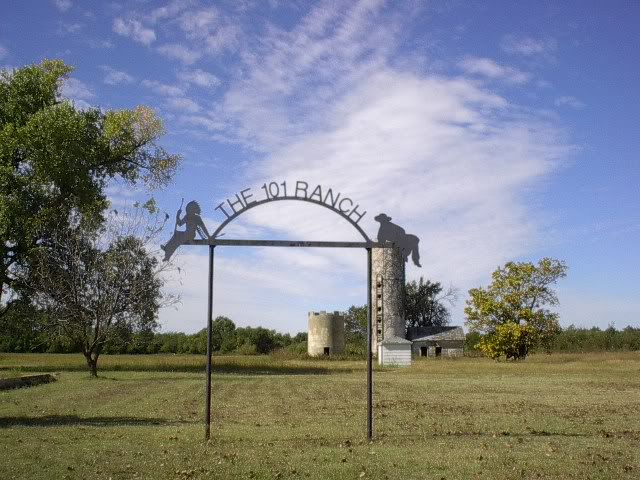
Welcome to the White Eagle monument, visible on the road between Marland and Ponca City.
Notice the tower on the hill at the horizon? Here's the story:
White Eagle was the hereditary chief of the Poncas when they came to Indian Territory in 1877. As chief, he led the Poncas in their last war against the Sioux before they left Dakota Territory and Nebraska. He was also the medicine man and religious adviser. White Eagle led the "hot country" Poncas, those who chose to remain in Indian Territory, for 50 years.
In his last years when the tribe was engaged in negotiations over allotment, White Eagle reluctantly encouraged his people to comply. Shortly before his death in 1914, he passed leadership of the tribe to his eldest son and the last hereditary chief, Horse Chief Eagle.
White Eagle's death was an occasion of great ceremony. Dressed in his traditional regalia, he was buried in the Ponca cemetery near White Eagle, the village that bore his name near the Ponca agency. The chief's favorite horse was killed at his grave side.
On a hill about ten miles south of the 101 Ranch White House, the Miller brothers had a tall stone pillar erected in memory of the old chief. On top, its eyes watching over the rolling prairie, is a white stone eagle.
Beneath the pillar is buried Bill Pickett, a rodeo star from the early 1900s who originated "bulldoggin'." There are others buried on the hill as well; unfortunately, the area has suffered vandalism

This is the ruins of the "White House," the big house on what was the 101 Ranch. I need to go through my old print photos. Unknowingly, I took the last photograph of the White House, the afternoon before it was destroyed by fire. I stopped to shoot the photo because a bare lightbulb caught my attention, shining from a second-floor window. I had assumed the power was long ago cut off at the historic building. The next morning I awoke to the news that the ranch house had burned to the ground.

One of several stone pillars which marked areas of the 101 Ranch. My guess is this may also have served as a silo. It's one of the few structures remaining on the grounds.

The ruins of another structure on the old ranch, dedicated to Joe Miller Jr. in 2001. The Miller Bros., owners of the 101 Ranch, held more than 100,000 acres. They were better known for their Wild West Show -- in the 1920s it took more than 100 train cars to move the show from town to town. Stars of the show included Pawnee Bill and Will Rogers, among many.
The 101 Ranch is considered by some to be the birthplace of rodeo.

This arch has been erected as a memorial by the 101 Ranch Oldtimes.

2 comments:
Good stuff. Such is a major gap in my familiarity of state history. :-)
Love the photos and the text!
Post a Comment